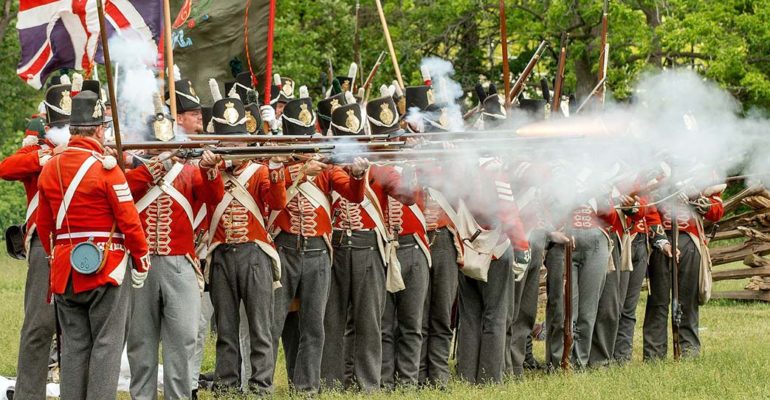Fort Wellington National Historic Park

Location: Prescott, Ontario
Owner/Operator: Parks Canada
HGC Engineering was asked by Parks Canada to measure noise from the firing of various historical weapons at Fort Wellington. Fort Wellington was built during the War of 1812 to defend the St. Lawrence River shipping route from attack by the United States and later helped thwart another American invasion during the 1837-38 Upper and Lower Canada rebellions.
The measurements were used to assess the noise exposure of the Parks Canada staff and volunteers during demonstrations of historic weapons at various sites across Canada, with respect to the Canadian Federal limits for workplace noise (SOR/86-304). Spectator noise exposure was also evaluated.
Noise Exposure Study of Historic Artillery Guns Firing
Subject to testing were two main weapon types, including field artillery guns and various small arms. Noise was measured from single shots of each weapon type, and from selected types of weapons firing simultaneously, in a volley or a continuous fusillade, as practical. Each weapon type was fired and tested at least three times, and the measurements logarithmically averaged together, with the exception of volley fire of the artillery guns, where only one test shot was practical.
The measurements were conducted at three different locations. One integrating sound level meter was used to measure the firing events near the ear of the gun operator. A second meter was located at the nearest spectator locations, at distances of 5.5 metres and 9 metres from the small arms and artillery positions, respectively.
Additionally, a noise dosimeter, located at the shoulder level of one of the Parks Canada employees, was set up to measure the average workplace noise exposure from typical work tasks other than shooting weapons, including office work at the visitor’s centre and maintenance tasks outdoors.
Environmental Noise Exposure Levels for Staff and Spectators
The results of the measurements show that, in situations where the number of test shots in a work shift is relatively low (less than 6), the noise exposure levels at the firing position are within the noise limits set out in the Federal regulations. The noise exposure levels at the nearest locations of spectators were generally found to be within the noise limits of the Federal regulations.
Supplementary measurements and evaluation, considering additional noise criteria for peak impulse levels from firearms used in some Canadian provinces, indicate that wearing of hearing protectors is warranted during the firing, regardless the number of shots per day.
Acoustical Engineering Services Included:
- Environmental Noise Exposure Study
- Workplace Noise Exposure Study
- Assessed Noise Exposure Levels with respect to Canadian Federal Occupational Health and Safety Regulations SOR/86-304
